This feature was taken from our special Electric Vehicle Charging Insight report.
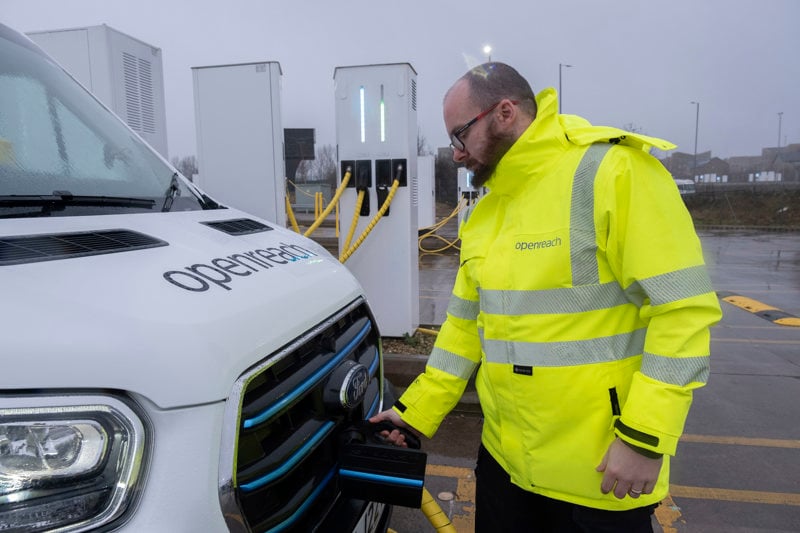
From ensuring it is future-proof to opening its charge points up to other fleets, there are several ways an organisation can get more out of a workplace charging scheme.
1 Ensure charging infrastructure is fit for purpose and future-proof
2 Embrace renewable energy/battery storage systems
3 Open workplace charging scheme up to other fleets and the public
4 Minimise charge point downtime with a robust aftercare strategy
1 Ensure charging infrastructure is fit for purpose and future-proof.
Installing a workplace charging scheme is a major investment for an organisation and will usually have huge ramifications on its day-to-day operations.
This makes it vital that it get the installed infrastructure right both for now and the future, with a number of factors needing to be considered. These will be different for different organisations.
“There’s no one-size-fits-all strategy for installing EV charge points or an exact figure for how many chargers you should have,” says Naomi Nye, head of sales at Drax Electric Vehicles.
“Each fleet has different requirements depending on the nature of its work, the number of available on-site spaces and whether there’s any existing infrastructure.
“For me, the key is planning. This is really about having an understanding of the needs and requirements and that fleet decision-makers are working to a long-term strategy that reflects the needs of their future fleet.
“Back in the day I think a lot of people thought charge points were just a socket on the wall. They’re not. There’s a lot that comes into it around management, including taking care of those charging points, how they are going to work with the vehicles, who’s using them, how they’re using them and whether there is a payment facility on there.”
One of the early decisions to make is how many charge points are needed and what type.
This will depend on the number of EVs operated both currently and in the future, the number of available parking bays, and the duty cycle of those vehicles.
The latter factor – and more specifically, the amount of time the car or van is parked between uses and the distance it will be driven after that – will affect the speed of the charger required.
For example, if an EV can be left plugged in overnight, a 3kW or 7kW AC charger may be sufficient. If the vehicle dwell time is less a faster charge point may be needed.
The type of charge point installed will also significantly affect the cost of the project: the Energy Saving Trust reports the cost of a 7kW double-headed post is £1,500, a 22kW double-headed post is £2,500 to £5,000, while a rapid charge unit can be up to £35,000.
In many instances, the amount of energy needed to power a large number of chargers will exceed the supply to the site.
This can be tackled mainly in three ways: by using a load management system which limits the amount of power being used at any one time, a battery energy storage solution (see page xx), or through a sub-station upgrade which increases the amount of power going into the site.
A load management system works by balancing the speed of charging between the number of vehicles which are plugged in.
For example, a site has a bank of six 22kW charge points on a site with 32kW of spare capacity.
When all six charge points are being used, the load management equipment limits the amount of power at each charge point to avoid exceeding the spare capacity: this may mean each vehicle is taking on electricity at one-sixth of the capacity available, which is approximately 5kW.
If three vehicles are plugged in, they charge at half of the capacity available (around 10kW) and so on.
This can be combined with smart charging, where drivers specify the amount of charge they need and at what time, and the system will balance the charge between the vehicles to achieve this.
However, if this is not suitable – for example, if all the vehicles have a short dwell time before they need to be used again so need to be charged at the same time - then an upgraded substation may be required at the site.
Before April 2023, the substantial cost of this work had to be paid for by the organisation, but an Ofgem ruling means it now has to be spread across the electricity distribution sector instead.
Organisations are still responsible for any groundworks needed on their sites, and this will influence the location of any charge points as the more excavation which is needed to install the infrastructure, the more expensive the work becomes.
The closer charge points are to the site’s power supply, the less groundwork needs to be carried out.
Currently the Government has two grant schemes to help organisations install workplace charging – the workplace charging scheme and the electric vehicle infrastructure grant for staff and fleets.
A further way to keep costs down is to initially install a small number of charge points and add to them as the EV fleet grows. This requires a smaller initial investment, but it is still important to understand what the end goal is.
This approach has been taken by Pilgrim’s UK, which is using EV charging specialist Mer to provide a phased roll-out of infrastructure across 11 sites.
“Grid capacity is an issue for a lot of businesses looking to install EV charge points and some of our sites were challenging,” says Graham Handford, procurement manager, indirect for Pilgrim’s UK, which has introduced a policy mandating all-electric or plug-in hybrid vehicles as it looks to transition its 200-strong company car fleet to electric.
“In some cases, this meant bringing more power on site, and in others it meant Mer deploying the smart chargers’ load-balancing technology.”
The original installation also saw work to future-proof the infrastructure, with a lot of the connectivity work below ground being carried out so more chargers could be added quickly and cost-effectively in the future, he adds.
This has already paid off as the uptake of electric company cars at its Warwick head office has meant it has already had to expand the charging infrastructure there.
2 Embrace renewable energy/battery storage systems
Organisations operating electric vehicles can further enhance their environmental credentials by embracing renewable energy.
The simplest way to do this is to use a renewable-specific electricity tariff, but they can take this a step further – and cut their electricity bills into the bargain– by installing solar panels on either their buildings or on canopies above their car park.
This allows an organisation to generate its own electricity with any excess being sold back to the grid and is becoming more popular as organisations work towards achieving net zero emissions.
Last month (April), for example, Wiltshire Council began operation of a solar car park at its Five Rivers Health & Well-being Centre, with the panels covering 70 parking spaces.
As part of the project, solar car park designer and operator 3Ti also installed an integrated charging hub, which can charge 12 EVs at up to 22kW simultaneously.
In its first year, the solar array is expected to generate 186MWh of electricity, enough to power an EV for around 680,000 miles, saving 36 tonnes of carbon emissions.
The leisure centre will use 100% of the solar generation on site, cutting around £50,000 a year from electricity bills.
A greater benefit can be had if a solar installation – or wind turbine - is integrated with a battery energy storage system (BESS).
“One of the most common applications for battery storage is to maximise that renewable energy,” says Nigel Dent, head of sales at Connected Energy.
“It allows you to capture excess solar generation into the battery, rather than sending it out to the grid on a very low export price during the day, and then discharging it to provide that overnight vehicle charging.
“It can reduce your energy costs because you’re basically offsetting grid electricity through using solar, and then you’re also meeting decarbonisation targets by powering your EV chargers with the renewable energy that you’ve captured in the batteries.”
A BESS can also link directly to the electricity grid, charging when a site’s power demand is at its lowest and then providing a buffer when vehicle charging is at its peak.
This could also reduce energy bills. A smart BESS can respond to changing electricity tariffs in real-time, charging the batteries on low-cost off-peak tariffs then discharging that energy for use when tariffs are at their peak.
“We also think BESS can help organisations overcome any power constraints to sites,” says Dent.
“There could be certain times of the day when the EV charging load is spiking and the site does not have the necessary power available.
“A BESS can manage those peak load spikes because you can charge your batteries when there is available capacity and then you discharge it out when there is none available.
“It is a good alternative to grid upgrades, which negates in some cases very high costs and extremely long timescales.”
Steve Large, tech director/CEO of energy management company Hangar19, says BESS can also be used to allay any concerns among drivers over smart charging.
“People get really scared about leaving a vehicle at 3pm and being told ‘don’t worry it’s not charging now, when you come back at 6am to use it, it’ll be ready’, because they do worry about it not being ready when they need it,” he says.
“Sometimes you have to start charging immediately just to help people while they’re learning about the technology to build up that trust.”
3 Open workplace charging scheme up to other fleets and the public
Organisations can unlock extra return on investment by opening up their workplace charging infrastructure to other fleets or the public.
Research by the Association of Fleet Professionals (AFP) has found 58% of van fleets would consider sharing their depot or public charging infrastructure with other businesses to make electrification more practical.
“We have a set of electric van operators who that that shared charging is a very good idea and would really like to make it happen,” says Paul Hollick, chair of AFP.
“There are a whole series of hurdles that we face – including setting prices, payment mechanisms, reimbursement, site access, health and safety on premises and more – but from our discussions so far, none of them appear to be impossible to solve.”
The organisation has formed a shared charging committee and fleets represented one it include The AA, Alliance Healthcare, Auditel, IFC Group, National Grid, Novuna and Royal Mail.
“The fleets involved have a range of different ideas and propositions,” says Hollick. “Some want to arrange reciprocal charging with others on a national basis, some have chargers and would like to offer access to others, and some even have land available where they would potentially be able to install further chargers for widespread fleet use.
“There seems to be general agreement that shared charging is not really about overnight use, but providing an option for top-up charging that enables an electric van driver to complete their journey during a working day.”
He adds it appears that digital solutions are available that would answer many of the questions around pricing, payment, blocking out availability to ensure that ‘home’ fleets get priority access to charging when they need it, and even site access where there are security measures in place such as RFID gate access.
“If anything, the main discussion point seems to be health and safety, with employees entering sites where there are potential risks present of many different kinds,” says Hollick.
“However, there appears to be a real will to make this work. Creating greater access to charging is really the number one measure that would help electric van operators to solve many of the operational issues they face, and shared charging could massively increase the number of chargers available at a stroke. We do seem to be making strong progress.”
While this work is ongoing, some individual fleet operators have already opened up their workplace charging infrastructure to other EV users.
Welch’s Transport, for example, has installed a 150kW supercharger at its Urban Consolidation Centre in Duxford, near Cambridge, which fleets can book via an app.
“We are helping to start the infrastructure with our partners and peers, but also with councils who can charge their bin lorries here,” says Chris Welch, managing director of Welch’s Transport.
Another is First Bus, which sees Openreach, DPD and Police Scotland using its rapid charge points at its depots in Glasgow and Aberdeen during the day when they are not being used by the public transport operator.
“These partnerships demonstrate the power that comes from working together to reduce carbon emissions and improve the air quality in the communities we serve,” says Graeme Macfarlan, commercial director for First Bus Scotland.
“As businesses across Scotland embark on the journey to electrify their fleets, it simply isn’t practical for every business to build its own charging infrastructure.
“We understand these challenges and are providing a smart solution that benefits the community and optimises space.
“We’d love to attract more businesses to charge up using our kit while our buses are out on the road.”
As part of the initiative, First Bus provides 24-hour CCTV operation, 160 rapid charging points, site access via ID card provided to all approved staff, permitted charging times agreed in line with individual business requirements, pedestrian access to nearby catering and rest facilities, and tailored billing and financial reporting.
“As two major fleet operators in the UK, it makes sense for us to explore the most efficient ways to power up our electric vans and buses,” says Robert Thorburn, partnership director at Openreach Scotland.
“First Bus has made a massive investment in charging infrastructure and using their empty stations to juice up our vans will take pressure off public charge points.
“Our engineers often live in flats or apartments where charging is not yet an option, so this will make life easier for them too.”
In April, First Bus extended its network of accessible charging stations with a new ‘turn up and charge’ hub of eight 150kW rapid chargers at its depot in Summercourt, Cornwall.
As well as being open to businesses, they are available for the public to use.
Similarly, SSE has taken the decision to open some of its workplace charging facilities to the public.
In August last year, it opened a 10-bay EV charging hub at its Spa Road depot in Melksham.
Before this, there was just one publicly-accessible ultra-rapid EV charge point in the town of 18,000 residents.
“The installation of charging hubs based on our own sites where SSE Fleet vehicles operate will assist us greatly as we transition more than 2,500 vehicles to zero emissions by 2030,” says Simon Gray, head of fleet for SSE.
“With the added benefit of opening up these charging facilities to the public where possible, we can provide even more support to local communities and fleets to help reduce harmful emissions from transport.”
If an organisation decides to open up its charge points to non-employees, an organisation will need a back-office system which allows them to set different tariffs for different users, as well as ways to pay.
For example, Cumbria, Northumberland, Tyne and Wear NHS Foundation Trust has different tariffs for different users – free charging for fleet vehicles, a preferential rate for staff and a higher rate for staff – of its charge points.
“It was important to be able to differentiate for different use cases and also to have different methods of accessing the chargers, from contactless payment to RFID cards and key fobs,” says Lee Cant, commercial director of NTW Solutions, which is the entity established by the trust to provide support services.
4 Minimise charge point downtime with a robust aftercare strategy
An organisation can have the most meticulously planned, most technologically advanced and expensive workplace charging infrastructure possible installed, but if it regularly breaks down then this will all be in vain.
Vehicles will not be ready for their daily duties and a fleet will have to resort to plan B, which is often using the public network at a much greater cost and with a significant amount of downtime at a time when the EVs should be put to work.
To prevent this scenario, organisations need to maintain chargers in a serviceable condition.
The first step to 24/7 uptime occurs before a spade has even broken the ground to lay power cables.
Fleets need to make sure that when the infrastructure goes in, the number of chargers and specification are right for the site, particularly where power capacity is concerned.
“Issues will happen if you try to overload a site or install too many chargers,” says Graham Rowlands, managing director of Devitech, which provides commercial EV charging installation, support and aftercare.
Selecting robust chargers made by hardware manufacturers with a ready supply of replacement parts is also important, with infrastructure installers and maintenance companies advising fleet decision-makers to discuss the reliability of chargers with their peers.
Not all hardware performs to the same standards and any initial savings from buying a poorer quality product can soon evaporate in vehicle downtime and lost fleet productivity.
Since July 2022, the Government’s Smart Charging Regulations have made it compulsory for all home, workplace and commercial vehicle chargers sold in the UK to have ‘smart functionality’.
This allows for charging when there is less demand on the grid, or when more renewable electricity is available.
Importantly for fleets, it also ensures charge points have the ability to communicate and receive information, essential for the real-time monitoring of chargers so any faults can be detected and diagnosed, hopefully leading to a swift fix. It also allows for over-the-air firmware updates.
If there is an interruption to charging, some chargers can ‘self-fix’ minor issues, and if this doesn’t work, they alert both fleet managers and charging solution providers to attempt a remote fix.
In many instances, what appears to be a problem is simply a drop of wi-fi communication, with the charger still supplying power to a vehicle, but power outages can trip breakers and components do break down.
A fleet decision-maker should ensure that selected charge points are OCPP (open charge point protocol) compliant. This means that any back-office monitoring can be done by any company, whereas a non-compliant charger might be accessible only to a specific hardware manufacturer.
Charger aftercare solutions tend to bundle the remote monitoring of chargers with a maintenance package that sees engineers inspect hardware on a six-monthly or annual basis, paid for a subscription-type fee per charger.
Charging solution providers are also keen to train fleet and facilities managers to be ‘first responders’ in the case of a charger failing, with priority given both to the post-installation handover to instructing drivers about how to charge safely and securely.
Charging is one of the biggest challenges faced by fleets and their drivers in the transition to full electric. In our latest Fleet News special report, we break down the challenges affecting each of the charging types - home, workplace and public - and provide advice and guidance to help you navigate your way through the EV transition journey.



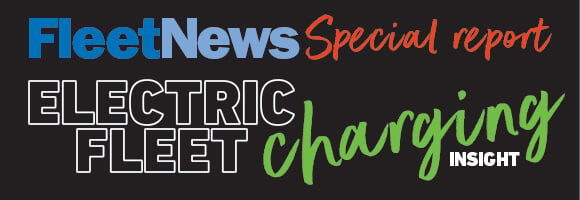




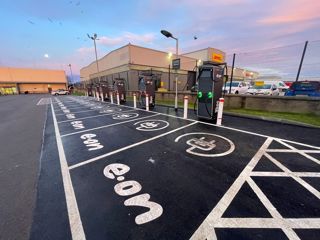
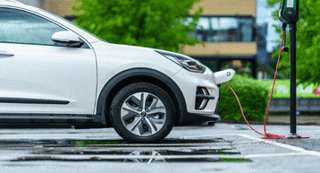

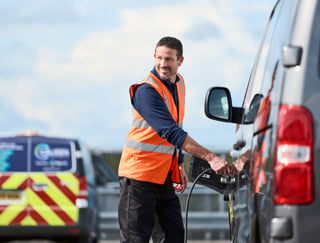
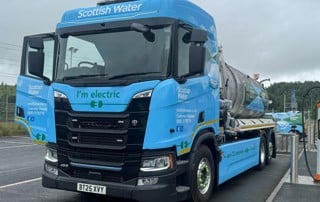











Login to comment
Comments
No comments have been made yet.